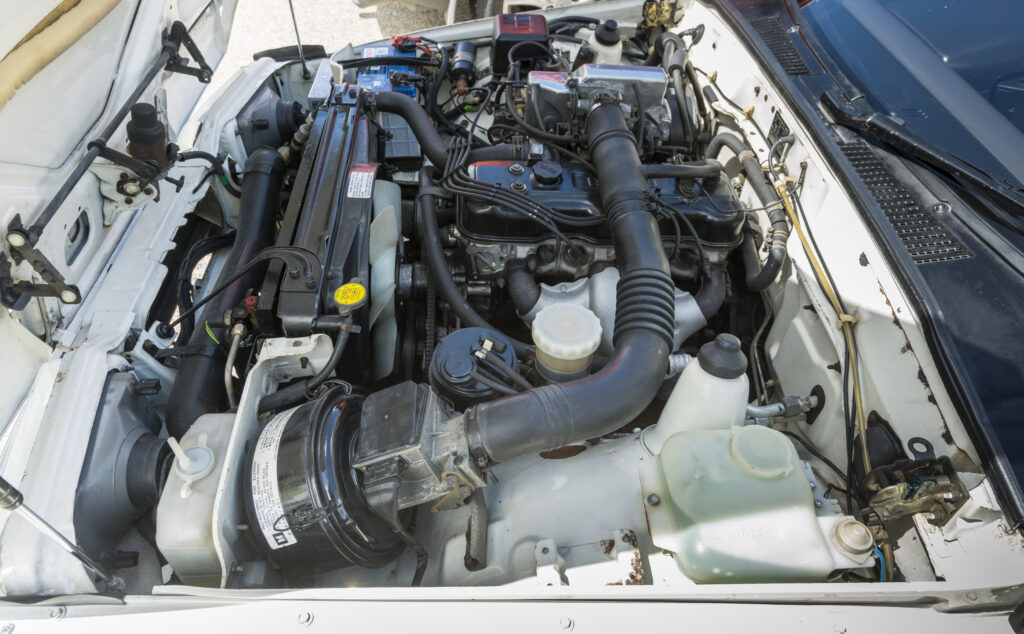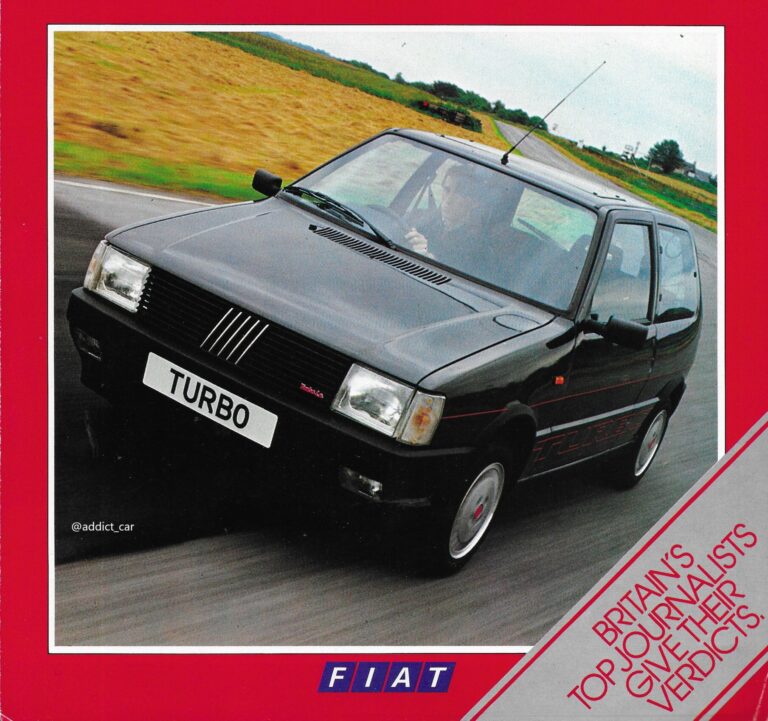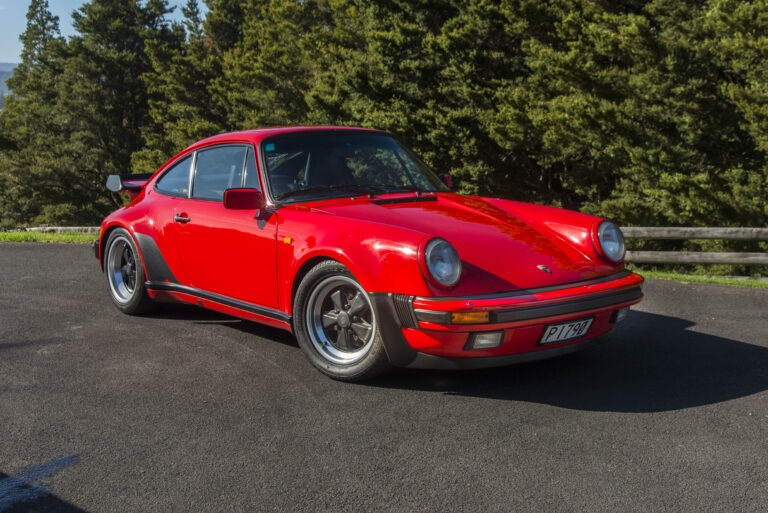Italian style, Japanese engineering, and, in some cases, English handling — surely a recipe for success? Yet not. So now you can add another virtue — rarity
By Ian Parkes
Photography: High Art Photography
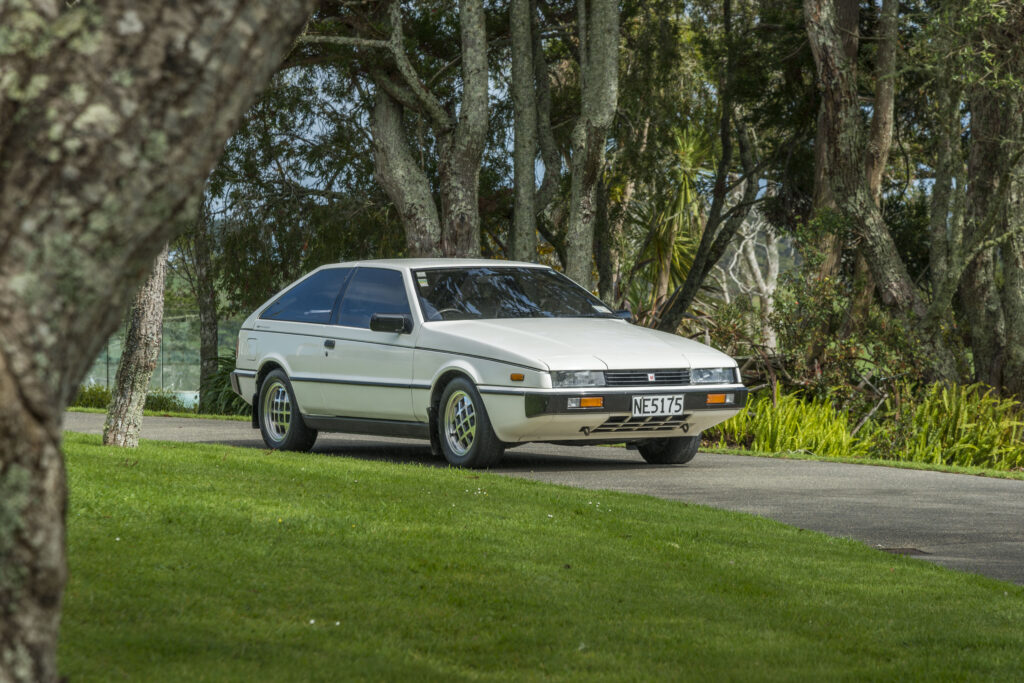
They do say if you can make your passion your work you are pretty lucky. By that definition Stephen Perry is a lucky man. He shoots cars for us at Classic Car from time to time and for fun, when he’s not busy, he takes pictures of classic cars.
He sent through a few shots recently of all kinds of exotica, just to see if we were interested, and this one caught our eye. We went past Ferraris and Porsches and the like for … an Isuzu? Really?
Well, just look at Stephen’s photos. It’s lovely! It’s a simple, refined, bang-on-trend ’80s wedge, and it avoids the mistakes other manufacturers made when they over-egged the wedge. I’m looking at you, TR7s and Alfa 75s.
It should come as no surprise that this Isuzu was designed by Giorgetto Giugiaro, a doyen of Italian design, in the era when his studio produced the DeLorean, the Lancia Delta, the Fiat Croma, and the original VW Jetta. Giugiaro smoothed off the sharp edges for Isuzu, linking it back to the pretty 117 he had drawn for it previously. In doing so he gave the car a touch more class than most of its contemporaries.
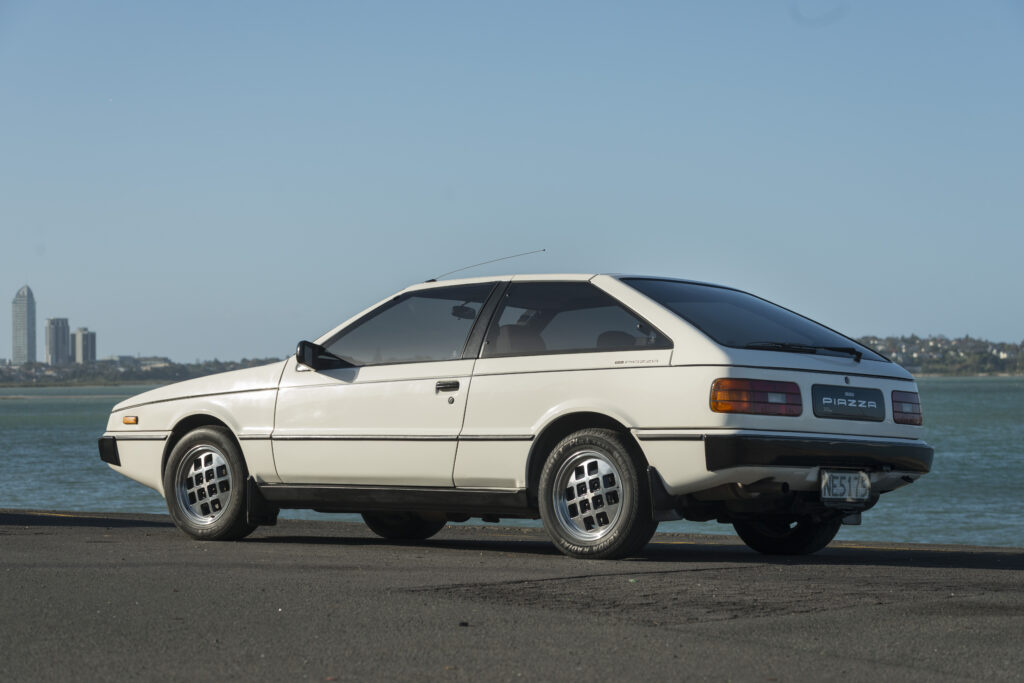
Card trick
Giugiaro himself — the man who created the Ferrari 250 GT — was pleased with the design that Isuzu had commissioned to be based on a GM Chevette platform. His design, called the Asso di Fiori (Ace of Clubs), was unveiled at the 1979 Tokyo Motor Show to rave reviews. Isuzu fast-tracked it into production.
Carrying the nose forward to refine it just a touch more shows the respect Isuzu had for its lines. It meant engineering in some mechanics to flip up little eyebrows in the bonnet lip to expose more of the lamp glass in this pre high intensity light bulb era. You can imagine most car makers would go, “No, cut it off there”. If Isuzu had, it would certainly have been a less characterful design.
I can remember seeing one or two of them when they were new in the ’80s and feeling a fondness for the car, and for the company that had produced such a clean and restrained design. Up close you get to see how serious Isuzu was about getting it right. Sections of the plastic bumpers are painted to look like black steel set into the front and rear valances. They have a steel reinforcing bar behind. This gives the car a much crisper finish than the usual strut-mounted fenders. The hard plastic does tend to retain any tiny parking dents, though.
The owner, Brett Houston, was motivated to buy it by a similar reaction to seeing the car. He and his wife, Christine, who live in rural north Auckland, had stopped for a break after visiting friends up north when a car club outing cruised by. At the end of a long line of modern classics there was a metallic green Piazza. It caught Brett’s eye and must have stuck there. It got him wondering how many of them were still around so he found himself idly looking for them on the web.
Brett was on the point of selling his business four years ago, which meant his flash company car would be going back to the lease company.
“I had to pick up another car. I was heading into retirement and I thought, What am I going to do? I thought I’d much rather have something old and interesting, and it didn’t matter if it needed a bit of work doing on it.”
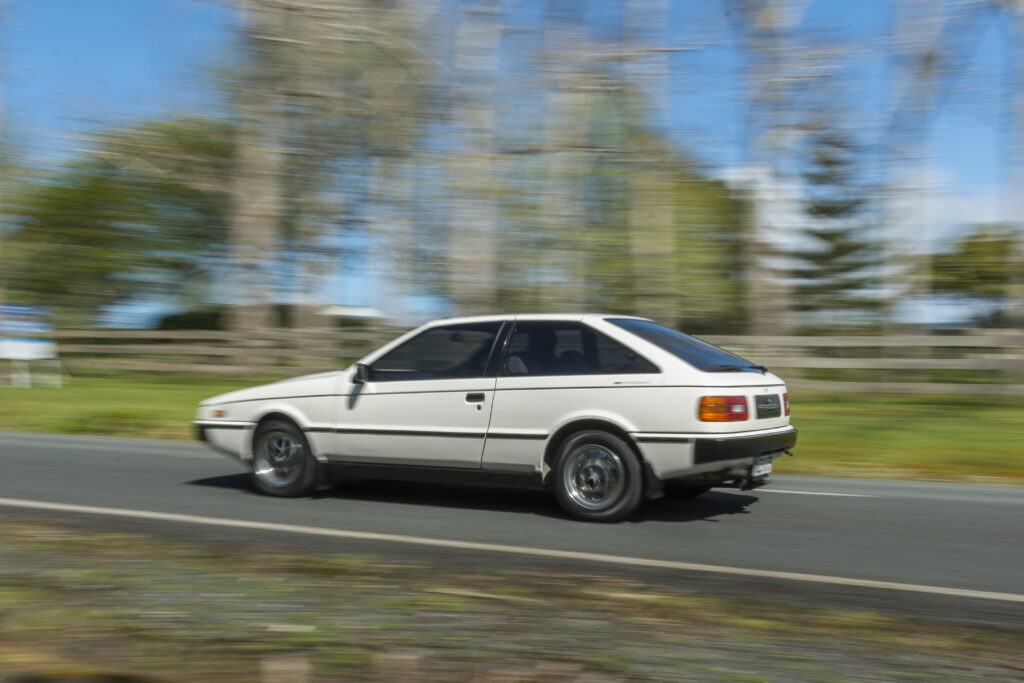
Piazza delivery
Not long after, Brett was idly checking Internet car sales when this one came up. He phoned the owner and was pleased to find out it was a one-owner car. The owner lived in Christchurch. He had decided to buy the car for his wife for one of those significant birthdays and it had been her daily driver since then. He also volunteered that they had had to go to a dealer in Greymouth to collect their new car as that was the only one available.
There’s something irresistibly charming about a Japanese car, with classy Italian styling, made by a company best known for trucks, that found a buyer on the rugged West Coast of New Zealand.
“I didn’t even go to look at it,” says Brett. “I just flew down, collected it, and got to know it on a very pleasant drive back.”
Brett looks after his cars, so once it was safely at home he set to cleaning it out. The previous owners had had a different approach.
“I had a lot of fun cleaning it,” says Brett.
The under-bonnet area had clearly seen little attention, giving Brett the chance to clean half of it and take ‘before’ and ‘after’ pictures. They show what a little elbow grease can do, and help explain — if anyone is interested — where all those hours in the garage go.
On the credit side of the ledger for the previous owners, they had actually put two layers of sheepskin covers over the seats. That meant the original fabric upholstery was in nearly perfect repair, although Brett couldn’t avoid mentioning there was just one seam starting to let go.
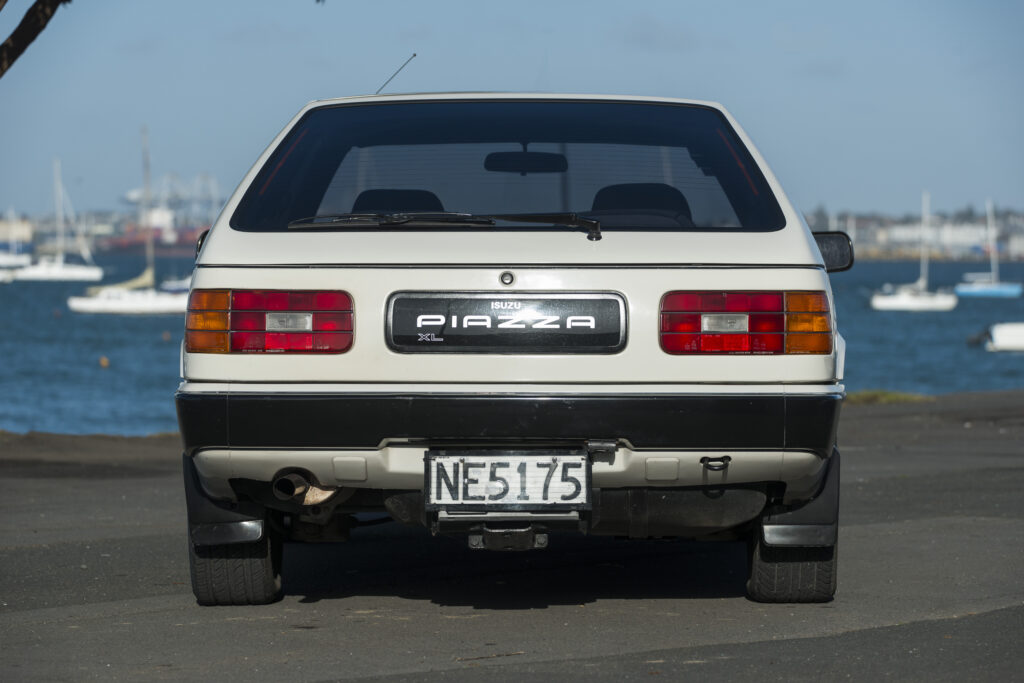
Into orbit
It is inside that the ’80s style really shines through. Subtlety goes out the window as the dash is dominated by a couple of pods, either side of the instrument panel, that look to be straight out of the Space Shuttle. The indicator switch is a pod-mounted flappy paddle rather than a stalk.
There are large knurled nuts under each pod that allow it to be rotated for that racing driver feel. However, Brett says it’s very much style over substance. It doesn’t matter where you place them, most controls are hidden by the wheel so, unless you drive it lots, you forget which is what and have to peer about to find something you needed a few miles back. Also, the plastics are very plasticky — but they were back then. When you think about it, it’s only in the past decade or so that car interior plastics have advanced to the point at which you are not immediately disappointed when you look at or touch them. In this car, they are so in your face that Isuzu has almost made a virtue of them.
Brett says one of the great pleasures of owning different cars — the large shed on his place is a treat for Ford fans — are the people you meet. The local Warrant of Fitness agents told him about another local Piazza owner, who turned out to be a Piazza aficionado, Alex Sey. Alex was a font of all kinds of advice and became a firm friend. Brett says dozens of Piazzas had passed through Alex’s hands and he had built a mountain of spares.
When Alex decided to move to South Waikato some time later, he didn’t want to take his Piazza spares with him. He sold off some parts and had decided to take the rest to the tip. Brett might have paid his debt forward in helping to persuade Alex otherwise. By this time Brett had also made contact with the owner of the green Piazza that had first caught his eye, and that person took on responsibility for rehoming the spare spares.
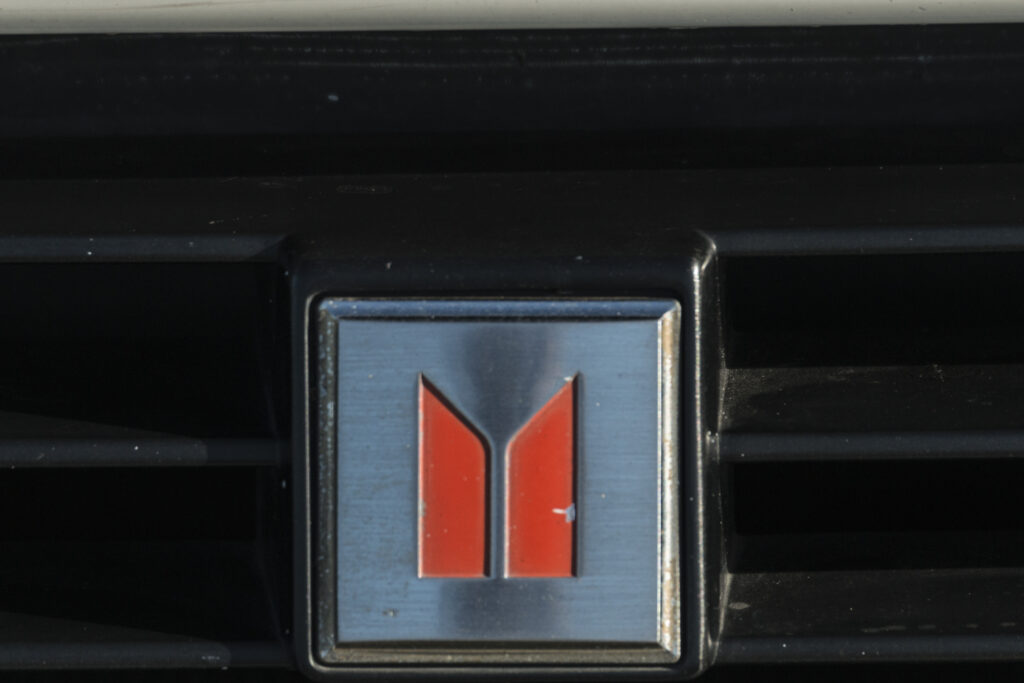
Tetris tune-up
Brett says he hasn’t had to do a lot to the car, apart from extensive scrubbing and cleaning. Alex helped him fix a door hinge that failed a warrant and also orchestrated a full engine reconditioning following a serious overheating issue. Brett also had some rust cut out of the tailgate and passenger door, and tinted the windows — something that complements this white car with black accents. It helps bring out the lines of the clamshell bonnet on those very cool chequerboard wheels. So 80s! Alex calls them Tetris wheels. They were fitted to all the New Zealand–new cars.
This is a car that was styled in Italy and built in Japan and featured all mods cons: central locking, electric mirrors, power steering, power brakes, power windows, air con with temperature control, fuel injection, four wheel discs. In America it even came with power air vent controls, power seat belts, and steering wheel position memory. It was known as the Impulse in the US as no one there wanted to drive a ‘pizza’. The engine was fairly potent, well able to compete with the Celicas and Integras of the era.
The first model came out in 1982 with a twin-cam two-litre engine — most of which were cannibalised to be put in the smaller Isuzu/Holden Gemini for racing. That engine was dropped in ’83 in favour of a single-cam engine that saw service in a lot of Isuzu vehicles — it was spiced up with a turbo option in Japan in 1984 and in other markets in ’86. Some criticised the car’s power but Alex has personally verified the factory’s claimed 0–100kph and quarter-mile times for the turbo.
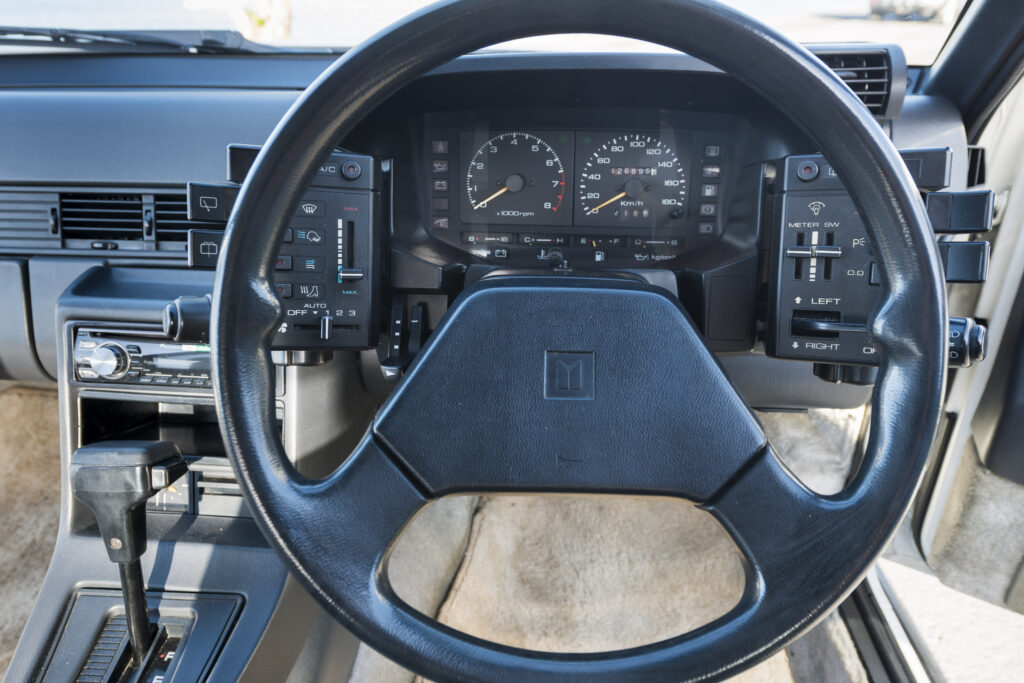
Rarity value
Piazzas remain pretty rare cars today. Alex says all Piazzas had one universal failing. They were too expensive. At $33,000 in Australia, where they were sold as Holden Piazzas, they cost more than six-cylinder Holdens, and Aussies like their sixes. It hardly needs pointing out that ‘universal failing’ now no longer applies. A reasonably good Piazza can be had for less than $10,000, and New Zealand is one of the better places to find one.
The car did quite well in the US but didn’t take off in other markets and failed badly in the UK. There it was panned for poor handling. It was rear drive, which was going out of fashion at the time anyway, but the balance was nose heavy. Alex says Lotus did some last-gasp suspension tweaks there, similar to changes made to the cars sold in Australia, but he drove a ‘Handling by Lotus’ version in the UK and pronounced it no better at all.
“I couldn’t get it around a roundabout without losing the back end.”
To make matters worse in the UK, the main dealer failed early in its life. Cars were stranded on the docks and were sold off at knock-down prices. As a result, fewer than 20 cars survive there today.
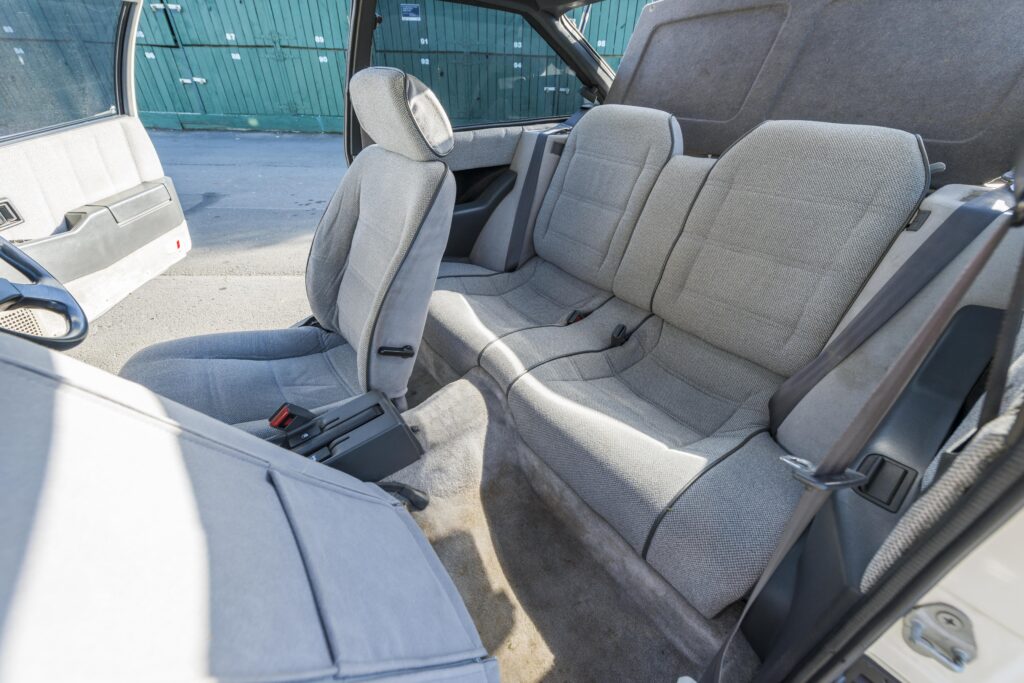
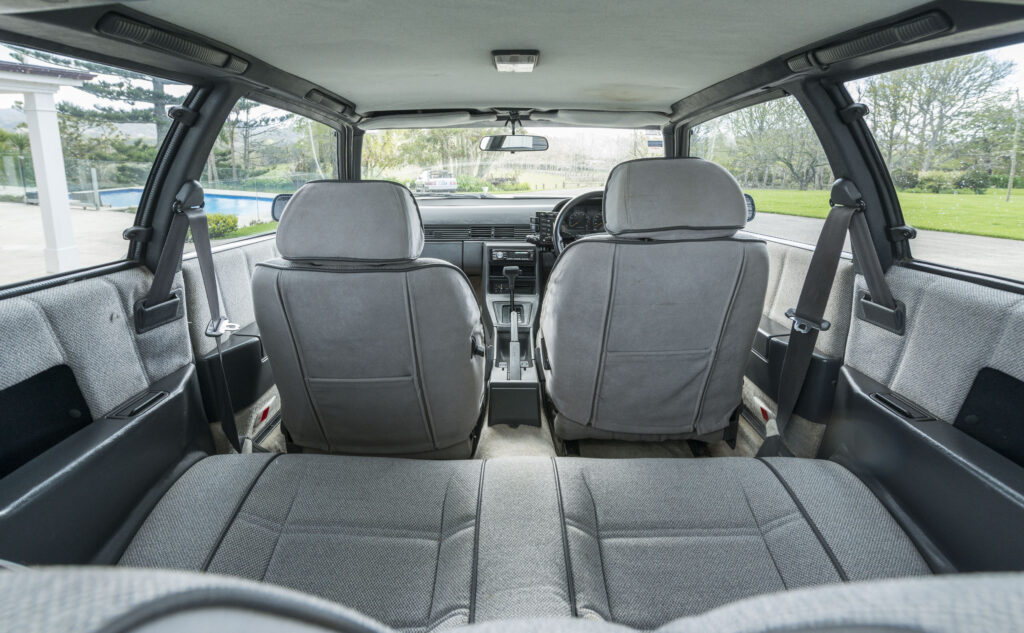
Demo goes digital
The Piazza did comparatively well in New Zealand, and Alex says the last time he looked, about a decade ago, 330 cars were still registered here.
Alex says New Zealand was an unusual market in that it was the only export market apart from the US to get the car in 1982 — Australia and the UK did not get it until 1986. The first one that arrived here toured GM dealerships as a show car. It featured a digital dash — never mind that it never really worked and was dropped the next year. None of the turbos was sold new here but a few were privately imported and at one time three of Alex’s six Piazzas were turbos. The best of them was a special model called the Nero, which had interior trim by Irmscher.
After 1988 the writing was on the wall for the Piazza. The last of the rear-wheel drive models were made in ’89 and Alex says they were assembled with whatever was in the parts bin.
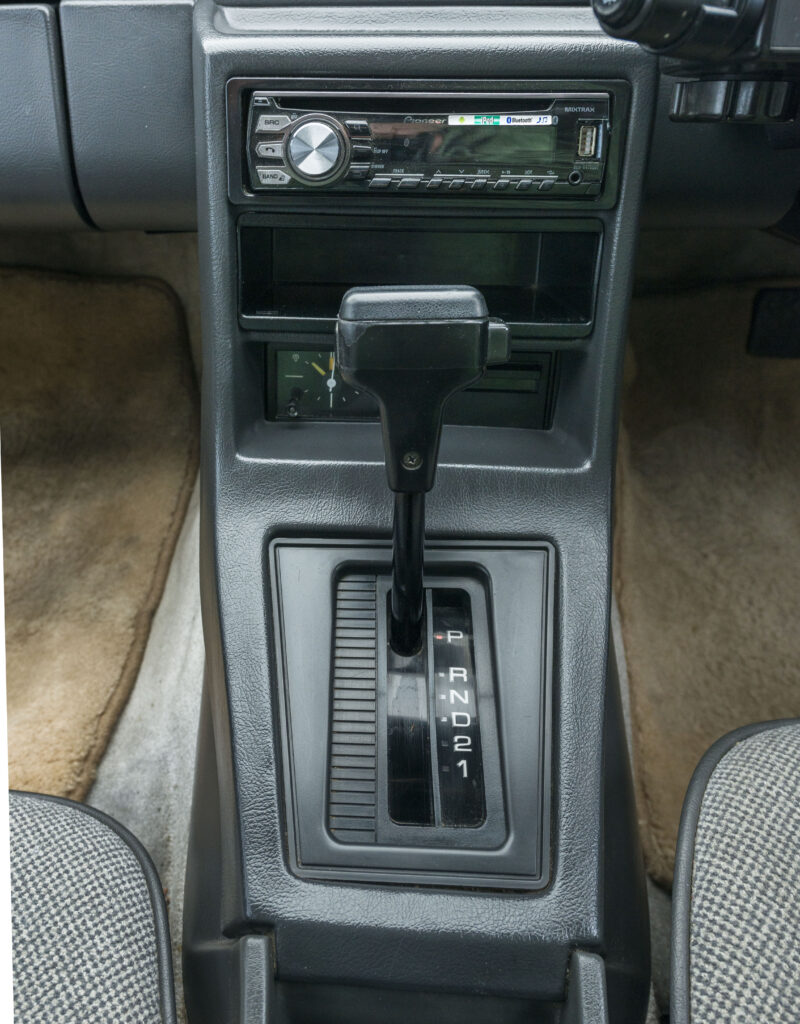
Unsuspected attributes
Brett says he has been happy with the car, which fulfilled its role as a good-looking and pleasingly rare daily driver. In four years he took the car from just over 100,000 km to 135,000km.
Then Christine asked if he was really okay with transporting his grandchildren in a car without airbags and side impact protection, so it was duly demoted — until the last few months. The couple’s large dog, Yana, a Russian terrier, has a degenerative disease in a front leg so finds the scramble into Christine’s SUV hard work, and winds up sitting low in the back where she can’t see out. However, Christine discovered it was easy for Yana to step into the back of the Piazza through the passenger door. With the seats folded she has a large platform to lie on and can see everything going on around her.
“It’s probably had more use in the past six months than in the previous couple of years,” says Brett.
So, in addition to all their other charms, Isuzu Piazzas make excellent dog ambulances.
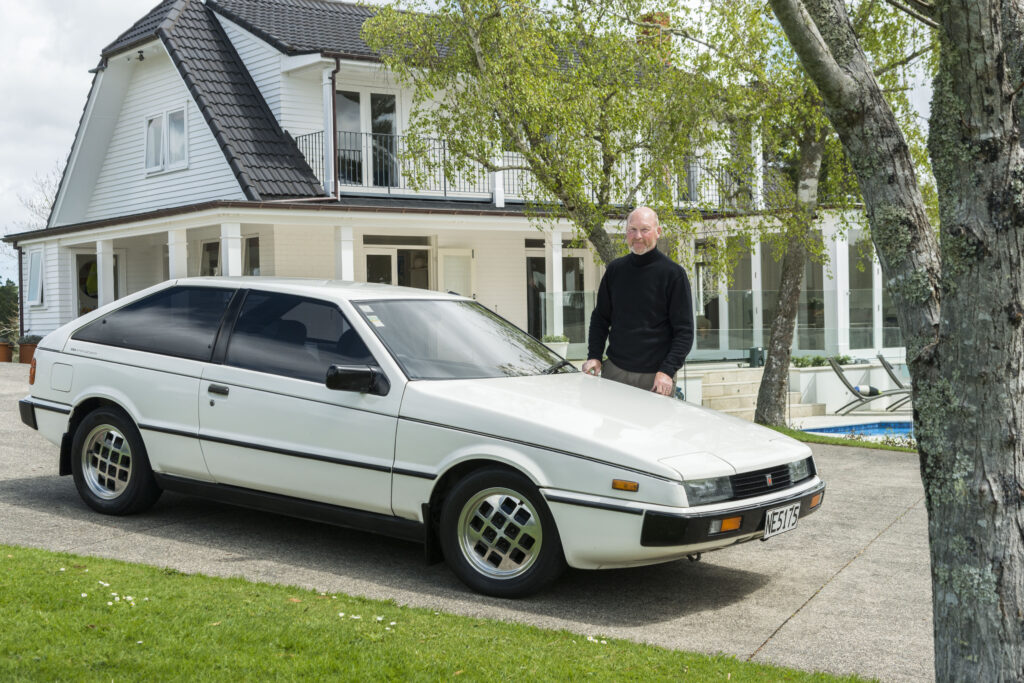
Specifications
New Zealand and Japan GRI130 (non-turbo version)
Engine: G200Z, 1949cc; (turbo: 4ZC1-T, 1994cc)
Inline 4, SOHC, fuel injected, JECS electronic ignition
Max power: 67kW (82kW)
Max torque: 146Nm (172Nm)
Transmission: four-speed manual or three-speed automatic
Brakes: Four wheel discs
Suspension (F/R): upper wishbone, lower control arm, springs and dampers / Panhard rod, 3-link live axle, coil springs and dampers
Dimensions
Length: 4385mm
Width: 1655mm
Height: 1300mm
Kerb weight: 1287kg
Performance
0–100kph: (8.8s)
Quarter-mile: (16.0)
